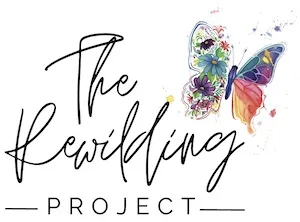Don’t be a dick.
Recently I was having a conversation with a colleague of mine about why people can sometimes, on a dime, turn into a jerk. We were talking about the hard to catch and hard to deal with behaviour of ‘being a bit of a dick’ – not a total a**hole, just a bit of one.
What I’m referring to is how certain topics can set people off for seemingly no reason. They can be ‘medium-button’ topics (as opposed to hot-button topics) but regardless the energy in the conversation shifts.
You might see them getting a little more edgy or defensive, and then start doing or saying things that really send the conversation down a rocky path.
When I’m working with my clients to try and create more harmony and connection in their relationships, we often come up against this behaviour. It’s an important one to manage because can be hard to catch and it really gets in the way of building trust in relationships.
Sometimes these behaviours are referred to as ‘gremlins’ to make it easier to label when it’s at play, and also to take some of the intensity out of dealing with it when it shows up.
The unconscious behaviour of an inner gremlin.
Gremlin refers to a set of behaviours and strategies a person uses in a situation to ‘survive’ it. These behaviours are usually automatic and unconscious, and have been created over time through various experiences. The key thing to remember here is that gremlin behaviours show up because someone is scared or uncomfortable.
One of them includes the distinction of the dick gremlin or ‘DG’ for short.
The dick gremlin is a really challenging ‘way of being’ that some people automatically resort to when they feel stressed, confronted, anxious, or upset.
The DG usually presents as a slightly mean-spirited-jerk and will definitely disrupt and kill off any connection and trust that exists in a relationship.
People who are using the DG as a front, are usually oblivious or have convinced themselves they don’t know about it, making it all the more challenging to deal with.
You might be one of those readers who are nodding along right now because you know exactly what I’m talking about. You’ve clearly been a victim of the ‘DG’.
If you don’t really know what I’m talking about – or you’re pretending you don’t really know – let’s go ahead and look at the basic DG profile and see what shows up.
The dick gremlin is not specific to an age or gender.
Men, women, and children of all ages can front the Dick Gremlin.
It’s a way of avoiding responsibility and protecting oneself from getting hurt – the old “I’ll hurt you before you hurt me” mentality.
In action, the DG can be identified in a few different ways:
Being mean, passive aggressive, or undermining
- Comments that take the focus off of them and redirects it back on you.
- Often experienced as confusing by the ‘receiver’ and as a result leaves them question themselves.
Stonewalling
- To block, stall, or resist intentionally.
Acting clueless
- When they behave as if they don’t know something that you know they know because you’ve actually/definitely/literally had a conversation about it.
Those are just a few highlights of how the DG presents in real life.
Why do people behave like this?
Why someone would act this way? What’s the pay-off for behaving like this? The clear result they get from this behaviour is some form of breakdown in the relationship.
It seems like such a silly choice for a person to make, right?
The thing is, in the moment, they are not often conscious of what they are doing. And those that are conscious of it may not know what to do about it.
People who act this way are scared.
It’s really that simple: gremlins (of all kinds) are created in an effort to keep us safe from perceived threats. We’re all trying to protect our fragile hearts and psyches from getting battered and bruised.
What can you to do about it?
We’re basically left with two paths at this point: You’re either being the dick or you’re dealing with it.
If you find yourself in a situation where you think the person you’re speaking with has engaged their inner DG you’re really only left with a couple of options.
Option 1: Call it out and redirect the conversation.
This works really well if you’ve had a conversation about the behaviour previously. If you know they are open to recognizing it in action, and stopping its impact in their lives as well as their relationships, then this is your go to solution.
It requires having had a conversation with your person ahead of time and talking about how you’re going to handle it when things aren’t heated.
- Doing this ahead of time is key, and will set both of you up for success.
Option 2: Stop the conversation and do not engage.
This means literally saying: “I’m going to stop this conversation now.”
Gremlins are not coachable. That means when a person has one of their gremlins running the show instead of themselves, you can’t have a meaningful conversation with them.
Maybe you’re dealing with a person who is not interested in transforming the destructiveness of their inner gremlin into something more open and loving. Well… you may have a bigger problem on your hands.
- Gremlins, no matter what their persona, how they behave, or why they were created in the first place, are a front. As a result, you don’t have access to the wholehearted person you’re wanting to connect with.
Gremlin busting is messy work.
It is only in rare cases that gremlin behaviour will just surrender and disappear – especially the first time someone is called out.
There are often layers to the gremlins that exist in our beings, and they were created for a reason: to protect us! Calling them out is often perceived as a call to arms for the gremlin.
You have to stick it out with power and compassion, holding boundaries, if you want to breakthrough the barriers, especially when it gets uncomfortable.
Keep In Mind:
You can’t work with a gremlin.
- If the gremlin won’t step aside, you’re better to end the conversation and try again another time
You can’t make the other person want to deal with their gremlins.
- If they’re not willing to let go, you may need to have a different kind of tough conversation
It’s likely that when you’re confronted with your partner’s gremlin, your gremlins will automatically show up too.
- It’s important to make sure you’re being responsible for that and taking a time-out if your know-it-all/ enabler/ caretaker/ victim/ etc. gremlin shows up to the gremlin party
If you have a gremlin on your shoulder, and you know it, it’s time to deal with it.
I get it. I know. It’s really uncomfortable when people see you, see who you really are and see your defence mechanisms.
And you know what? It’s ok. Stay with me here…
If you’re suffering from a case of the gremlins and you’re still reading this, I know you want to bust up the behaviour and find a new way to deal with uncomfortable situations.
I know you want to learn how to overcome your inner gremlin.
Good on ya! You know what else? You totally can bust up your gremlins and it’s a pretty straightforward process.
Step 1: Recognize it!
Once you admit you have an inner DG you have to get familiar enough with it to recognize it in the moment.
Spend some time thinking about interactions you’ve had in the past where your DG shows up and make a list of all the behaviours it tends to use.
Does Your Behaviour..:
- Undermine?
- Stonewall?
- Diminish or marginalize?
- Does it gaslight*?
- Gaslight: To cause another person to doubt him/herself through the use of psychological manipulation. This can mean making someone else question their experience of a situation and whether their feelings have merit by manipulating your side of the story. For example pretending something didn’t happen the way it did in an effort to protect yourself and avoid responsibility for something. Telling the other person that they completely misunderstood you when you know that it’s totally reasonable they landed at the conclusion they did.
Be really honest with yourself about all of this.
When you use any of these behaviours or similar versions, recognizing them and being responsible is the only way you’ll have any luck in shutting down a gremlin for good.
Step Two: Deal with it!
Just like other people can’t make any progress with a gremlin, neither can you – even if it’s your own. Gremlins cover up who you really are and what you really want. They block access to the things that really matter in your life.
You can’t get around them, you can essentially only disappear them by shutting them down or turning them off – and that’s really hard to do on your own.
My recommendation is that you share your list of behaviours with the people who are usually impacted by it.
Communicate and create a game plan.
- Talk to them (at a time when the gremlin isn’t trying to run the show) and come up with a plan of attack for how you’ll handle it the next time it shows up.
- Come up with a question or a phrase (like a safe word) that both you and your person can use when the DG may be rearing it’s head.
- Recognize what triggers your gremlin to jump into the driver seat.
Be responsible for your impact.
- This will be challenging for your person to confront your inner DG.
- You have to be responsible and really look to see if your DG is in action when you’re called on it.
- Although it may be difficult, you’ll need to confront your inner gremlin, especially while it attempts to protect you from perceived threats
- Deal with your triggers if you want to have any lasting change in this area.
Gremlin behaviours can work in tandem with each other.
What this looks like is having a couple of gremlins that like to alternate between each other, making it harder to pin them down and bust them up.
It’s also possible that your gremlins will trigger your partner’s gremlins and then you have one big gremlin party on your hands.
Gremlins are sneaky and subversive and the only way to be free of them is to get responsible for the fact you have them and get curious about why they were created in the first place.







